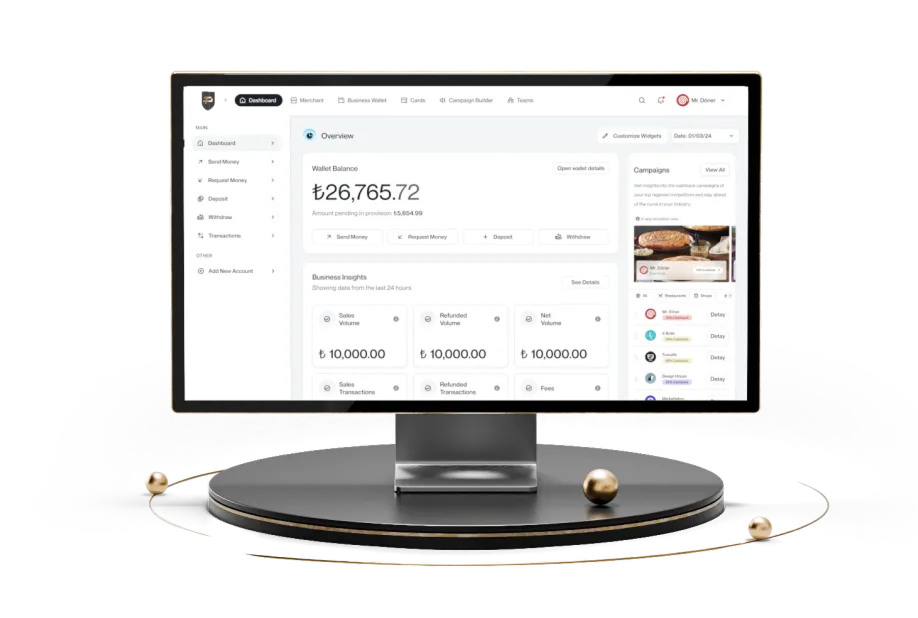What Are Non-Deductible Expenses by Law?
Did you think all your expenses reduce your tax base? Unfortunately not! Tax legislation disregards some expenses and includes them in the tax calculation. These types of expenses are called non-deductible expenses by law. This article details what non-deductible expenses are, which types fall under this category, and how they are managed in accounting.
What are non-deductible expenses by law?
Non-deductible expenses by law are those that businesses incur during their commercial activities but are not included in the tax base calculation according to tax legislation. Businesses may record these as ordinary expenses; however, these amounts cannot be deducted when determining corporate income and must be added back to the tax base. These regulations are designed to prevent tax loss and ensure that commercial income is reported accurately. Non-deductible expenses may include corporate tax payments and personal expenditures that are not eligible for tax deductions. Therefore, businesses should consider the tax nature of their costs when recording them. These non-deductible expenses, which directly affect the tax base and increase the tax payable, are recorded separately in accounting and are typically tracked under the account “689 – Other Extraordinary Expenses and Losses.” This practice ensures accurate financial reporting and easier identification of such expenses during tax audits.
What types of expenses are considered non-deductible?
According to the provisions of the Income Tax Law (GVK) and the Corporate Tax Law (KVK), non-deductible expenses (KKEG) cannot be deducted from the tax base. Therefore, businesses must not include these expenses in tax base calculations and must classify them correctly in their accounting records to avoid tax penalties or other legal consequences. The main types of non-deductible costs are as follows:
For income taxpayers
- The owner and their family members withdraw cash and assets from the business.
- Wages, bonuses, commissions, and compensations paid to the business owner, their spouse, and minor children.
- Interest on capital contributed to the business.
- Interest earned by the owner or family members on current or other accounts in the business.
- Fines, compensations, and penalties resulting from the owner's misconduct.
- Advertising expenses for alcohol, alcoholic beverages, tobacco, and tobacco products.
- Expenses and depreciations related to yachts, cutters, boats, planes, and helicopters that are not directly related to the business’s core operations.
- Compensation for material and moral damages due to offenses committed via the press or broadcast.
- Income tax and other personal taxes.
- Expenses are subject to the interest limitation rule.
- For businesses whose liabilities exceed equity, 10% of interest, commission, maturity differences, dividends, and FX differences on the excess liabilities.
For corporate taxpayers
- Interest paid or calculated on equity and disguised capital.
- FX differences and similar costs related to disguised capital.
- Profits are distributed through transfer pricing.
- Retained funds and legal reserves set aside from earnings.
- Corporate tax, other taxes, penalties, interest, and fines.
- Losses and commissions from sales of securities below market value.
- Expenses and depreciation related to luxury vehicles not related to core business activities.
- Compensation expenses arise from the crimes of shareholders, executives, employees, or the corporation.
- Compensations for damages caused by offenses via press or broadcast.
- Donations and contributions not made by the law or failing to meet legal requirements.

Under other laws
- Expenses not related to the generation and maintenance of income.
- Expenses lacking documentation.
- Expenses incurred due to prohibited acts by law.
- Payments are not accepted as expenses due to violations of the accrual principle.
- Costs and losses related to non-corporate-taxable income.
- Bonuses paid to board members.
- Provisions set aside under the Capital Markets Law.
- VAT on taxable transactions and deductible VAT.
- Paid VAT.
- Extraordinary Communication Tax Expenses.
- Costs of donated goods and services.
- Any undocumented expenses.
The types of business expenses that can be deducted are detailed in our article “What Types of Business Expenses Can Be Deducted and What Are the Conditions?” If you're wondering which expenses are deductible, we recommend reading it.
How do I prepare a list of non-deductible expenses (KKEG)?
The KKEG list, which helps determine which amounts should be added back to the tax base when preparing the tax return, should be updated regularly and filed completely. This ensures that both internal control and official tax audits proceed smoothly. Properly preparing this list ensures tax compliance and increases financial credibility. You can follow these steps to create your KKEG list:
Collect documents
Collect and record all expense documents in your accounting records, such as invoices, receipts, and contracts.
Evaluate expenses
Review each expense item under the Income and Corporate Tax Laws and relevant notices to determine if it qualifies as a KKEG. This step is critical since KKEG items should be tracked separately from regular expenses in accounting, typically under special subaccounts within “689 – Other Extraordinary Expenses and Losses,” to ensure transparency in financial reporting and prevent errors during tax declarations.
Record in separate accounts
As mentioned, record KKEG items separately from other expenses in your accounting system, preferably under the “689 – Other Extraordinary Expenses and Losses” account.
Check the trial balance
The trial balance is a table showing all accounts' debit and credit totals for a period. It helps verify the accuracy of accounting records. If the debit and credit totals match, the records are accurate. You can check the trial balance during interim tax periods and year-end to identify any errors or omissions in KKEG accounts. Comparing expense and KKEG accounts during this control step is essential to catch misclassifications.
Prepare for the tax return
Use the KKEG list during the declaration period to determine the amounts to add to the tax base and report them correctly.
Save the list for internal control and audit
Regularly update your KKEG list and file it for audit periods.
You can find answers to many other income tax-related questions and the tax brackets for 2025 in our article “2025 Tax Brackets: Calculation Methods and Examples.”
What are common mistakes related to KKEG?
Non-deductible expenses (KKEG) are critical when calculating a business’s tax base. However, failing to record and declare KKEG properly can result in miscalculating tax liabilities and facing potential penalties. Here are common mistakes and ways to avoid them:
Incorrect categorization and accounting records
Tracking KKEG items in the wrong accounts can affect the accuracy of accounting records. To prevent this, it is recommended to show KKEG expenses under the relevant accounts instead of “689 – Other Extraordinary Expenses and Losses” and monitor them through memorandum accounts.
Documentation deficiencies
Failing to document expenses or supporting them with insufficient documentation makes it difficult to identify KKEG items. To avoid such issues, every expense must be supported with invoices, receipts, or contracts.
Errors in tax declarations
Incorrectly reporting KKEG items in the tax return may cause the tax base to be miscalculated. This increases the risk of facing tax penalties.
This blog post contains general information, not legal, financial, or investment advice. The content is prepared for informational purposes only, and you are advised to seek professional advice for your specific circumstances. The expressions in this article do not carry any binding nature or responsibility and reflect only the author’s evaluation. All your decisions are your responsibility, and Papel Electronic Money and Payment Services Inc. accepts no liability.

